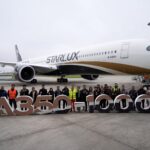The Australian Northern Territory is well known as a treasure trove for any World War II historians and enthusiasts. Highlights include the Darwin Military Museum at East Point, the Royal Flying Doctor Service tourist facility on Darwin waterfront, the World War II tunnels along Darwin harbour and numerous heritage-listed World War II aircraft landing strips located around Darwin and the wider Northern Territory. But for aviation buffs, there’s another must-see place – the Darwin Aviation Museum located on the Stuart Highway in Winnellie about 7km from Darwin CBD.
The museum is the commercial arm of the Aviation Historical Society of the Northern Territory. The society was established in December 1976 by a group of enthusiasts who wanted to preserve aviation artefacts and World War II aircraft salvaged after the destruction caused by Cyclone Tracy. The museum, opened to the public in 1988, was first located in Gardens Hill Crescent, The Gardens, in a pre-World War II navy victualling building leased from the Northern Territory Government. At that time it was run voluntarily by Aviation Historical Society members and required only a gold-coin donation for entry. In the late 1980s, the Society held negotiations with the United States Air Force and the Northern Territory Government to obtain a surplus USAF Boeing B-52G Strato-fortress bomber and to build a museum to house and display the aircraft. On 2nd June 1990, the new museum was opened in Winnellie with the refurbished USAF Boeing B-52G Strato-fortress bomber as a prime exhibit. This expanded museum has one of the largest collections of aircraft and aviation artefacts in Australia, outside of government-managed or supported facilities. The museum draws around 30,000 visitors yearly and is an accredited Northern Territory tourism attraction.
“We get visitors from all over the world. Europeans are particularly well-informed. They sometimes know more about these planes than the locals do,” said the museum manager.
Ticket prices have increased since the new museum was opened and I paid $36.00 for a family pass but that seems reasonable for the opportunity to view such an amazing collection of World War II aircraft and memorabilia. It’s not just adults who enjoy seeing these exhibits. Most children love being able to get a close up look at these magnificent planes and clamber around the viewing decks to look at the cockpits and unique designs on each plane. My eleven-year-old son was no exception. Pre-Covid, the museum also held open days when some of the larger planes exhibited outside would be opened up for visitors to walk through. Museum management says they hope to bring this event back this year if possible. Here’s a taste of what you could see if you were to visit the museum:
The Boeing B-52G Strato-fortress bomber
This formidable flying machine was used during the Vietnam war because it had increased bomb carrying capacity compared to other aircraft of the time. Many were modified and used for carpet bombing. From 1966 onwards, B-52Ds were sent on bombing missions from Andersen Airforce Base, Guam to Vietnam. Each bombing mission lasted 10-12 hours with aerial refuelling by KC-135 Stratotankers. In 1967, B-52Ds started flying from U Tapao Airfield in Thailand taking away the need to refuel mid-air. This beast of an aircraft can be viewed at eye-level, from beneath and above at the museum by climbing viewing decks. What it was used for during the Vietnam war is a stark reminder of the harsh realities of armed conflicts.

Copyright of Varunika. Ruwanpura
North American B-25 Mitchell
This bomber gained fame because it was used on the 18th April 1942 “Doolittle Raid” when 16 B-25Bs led by Lieutenant Colonel Jimmy Doolittle attacked mainland Japan from the aircraft carrier USS Hornet, four months after the Pearl Harbor attack. It’s reported that the raid caused little damage in Japan but lifted the spirits of the Americans and forced the Japanese to divert troops for home defence for the rest of the war. So it was a very symbolic and strategic air raid.

North American B-25 Mitchell. Copyright of Varunika Ruwanpura.
Supermarine Spitfire Mk VIII (replica)
Spitfires took over the defence of Darwin in January 1943 from the Royal Australian Airforce Kittyhawk Squadrons. Led by Group Captain Clive Caldwell who was Australia’s leading fighter ace, the Spitfires destroyed and damaged many enemy aircraft until Japanese air raids on the Top End ceased in November 1944. In September 1944, the Mk Vc Spitfires were replaced by vastly superior Mk VIII models but by then the air raids on Australia were far less. The VIII is the replica on display at the Darwin Aviation Museum.

Copyright of Varunika Ruwanpura
These are just a few of the many unique World War II and Vietnam war aircraft that can be viewed at the museum. These brutal wars are over now and we are at peace with Japan our neighbour across the sea in Asia. Chief Minister of the Northern Territory Natasha Fyles recently visited Japan for her first overseas tour in an official capacity. This is evidence of the close relations between Australia and Japan now. But walking through the Darwin Aviation Museum is a reminder to respect history and not let it repeat itself.









